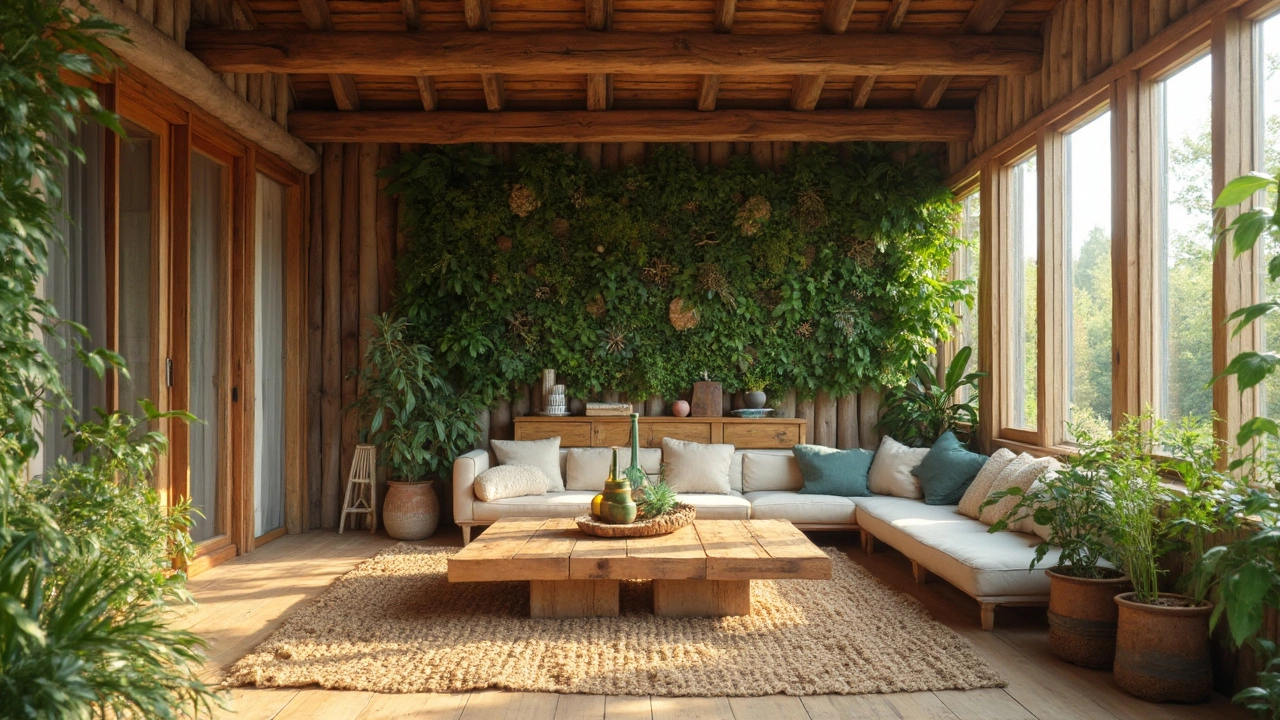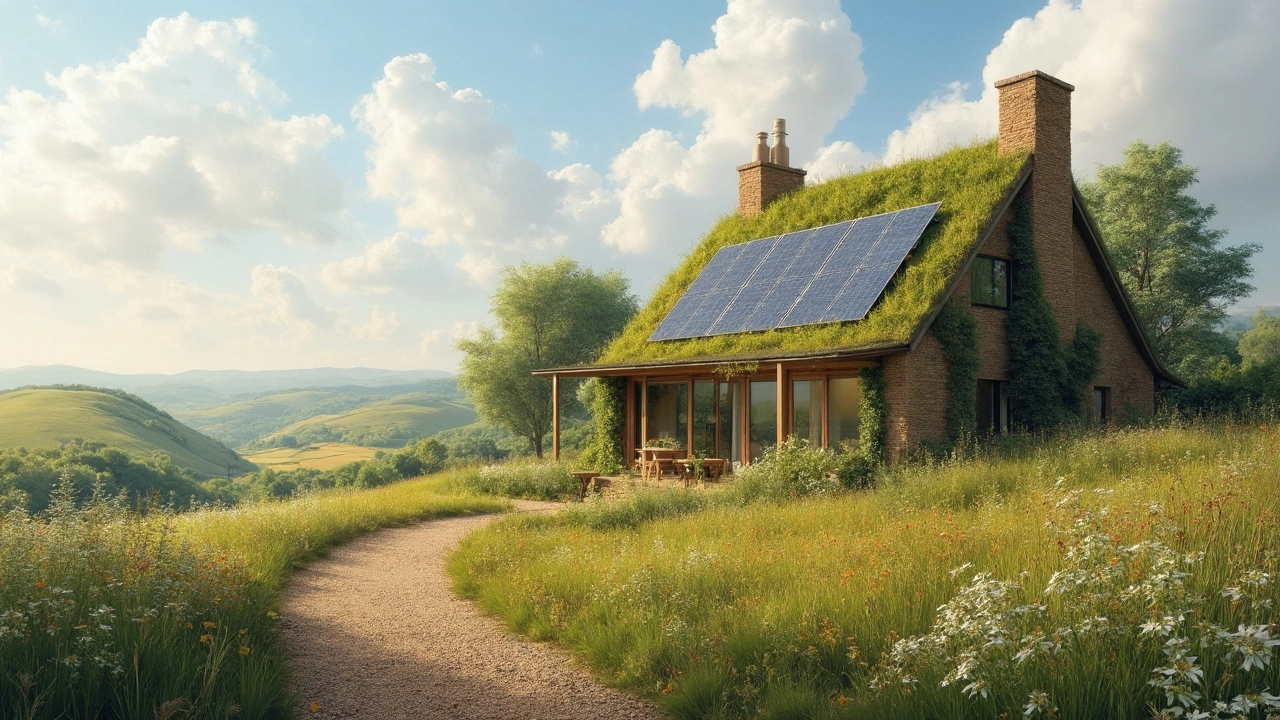Building a house might sound like a mountain of a task, but what if I told you that some of the simplest houses to build are also the most sustainable? Welcome to the world of eco-friendly cottages—your passport to a DIY construction project that doesn't require a second mortgage or a construction degree.
One of the first things to consider is the materials. Think recycled wood, reclaimed metals, and natural fibers. These aren't just good for the planet; they're also easy on the hands and incredibly adaptable. Opting for local resources also cuts down on transportation emissions, making the build even more eco-friendly.
Materials Matter
When it comes to crafting your eco-friendly cottages, the choice of materials plays a big role. It's not just about what's locally available, but also what aligns with both sustainability and ease of use.
Recycled Wood
Recycled wood is at the top of the list for good reasons. Not only do you cut down on deforestation, but using what's already there just makes sense. Think about pallet wood—versatile, sturdy, and often free. It's got that rustic charm that fits perfectly with a cottage vibe.
Reclaimed Metals
Reclaimed metals from old barns or warehouses can be your building blocks. They're great for roofing and structural elements and add an industrial touch without the need for new metal production. Less waste in landfills too. Win-win, right?
Naturally Derived Insulation
Your cottage will need to stay cozy, and there are plenty of natural options. Cotton insulation made from recycled denim is a popular choice, offering warmth and soundproofing without nasty chemicals. Sheep's wool is another fantastic choice, acting both as insulation and moisture regulator.
Sustainable Flooring
For the floors, bamboo is a superstar. It's durable and regenerates quickly, making it as sustainable as they come. Cork is another eco-friendly option that adds warmth and comfort underfoot.
| Material | Eco-Friendly Alternative |
|---|---|
| Wood | Recycled Wood |
| Insulation | Cotton Insulation |
| Flooring | Bamboo |
| Metal | Reclaimed Metal |
Choosing the right materials can reduce your cottage's carbon footprint and make the building process a lot simpler. Plus, it's a talking point around the dinner table when someone asks about your sustainable homes. Every choice counts in the quest to build the easy house of your dreams!
Design Simplicity
When it comes to building eco-friendly cottages, simplicity in design is your best friend. It's not just about making the project easier; it's about creating a sustainable living space that requires less energy and materials from start to finish.
Start with the basics: a compact footprint. Smaller spaces mean fewer materials and lower heating and cooling costs, making the whole project kinder to the environment. Think open-floor plans that use every square meter wisely. These designs are easy to personalize but hard to overcrowd.
Get the Most Out of Natural Light
Maximizing natural light is a smart move. Large windows placed thoughtfully can reduce the need for artificial lighting, saving on electricity bills. Not all windows are created equal, though! Double glazing can keep the temperature just right inside while letting the sunshine pour in.
Passive Solar Design
Consider a passive solar design, which is basically letting your home's position and design do some of the heating for you. Building with the main windows facing the sun is a great way to absorb that natural warmth.
| Design Feature | Benefit |
|---|---|
| Open Floor Plan | Maximizes use of space, reduces material usage |
| Large, Double-Glazed Windows | Saves on lighting and maintains indoor temperature |
| Passive Solar Positioning | Reduces heating costs, increases natural comfort |
Keeping it simple isn't just about aesthetics—it's a practical approach that means quicker construction times, less waste, and often, fewer headaches along the way. This is why choosing design simplicity is a game changer when thinking about easy-to-build, sustainable homes.

Cost-Effective Solutions
Building a cozy eco-friendly cottage on a budget is totally doable, and you don't have to compromise on quality or charm. One of the biggest cost-saving hacks is to choose materials that are both affordable and sustainable. For instance, straw bales can serve as an excellent insulator. They’re not just cheap but also surprisingly effective in keeping your home warm in winter and cool in summer.
Sourcing Materials
An often overlooked tip is checking out local building material auctions or salvage yards. These places can be a goldmine for items like reclaimed wood or repurposed bricks, which can cut down on your expenses significantly. When it comes to the interior, recycled glass or recycled metal elements can add a touch of style without breaking the bank.
DIY to Save Big
If you're handy, or even if you're not but willing to learn, tackling some of the construction tasks yourself can slash labor costs. Simple designs without excessive angles or complex features not only save time but also reduce waste. Consider prefab components that you can put together almost like a puzzle.
Finance Smart
Another solid strategy is looking into green home loans. Many institutions offer lower rates for building sustainable homes, so this could be another way to save. Even government grants for energy-efficient building projects might be available in your area. It pays to do a little research before you even start lifting a hammer.
Finally, sticking with basic, tried-and-true designs—like the classic A-frame or small cabin—can keep costs down while still delivering on that cozy, rustic feel you’re after.
| Item | Potential Cost Saving |
|---|---|
| Reclaimed Wood | 25-50% |
| Straw Bale Insulation | 30% |
| DIY Labor | Up to 50% |
Going Off-Grid
Dreaming of an eco-friendly cottage that's completely self-sustaining? Going off-grid is about freeing yourself from depending on public utilities like electricity and water. It's an exciting venture, especially when building your own home. Let's break down how you can achieve this sustainably and effortlessly.
Energy Independence
First up is energy. Say goodbye to hefty bills. Equip your cottage with solar panels. The beauty here is that they're relatively easy to install and harness plenty of clean, renewable energy, especially in sunny regions. A small wind turbine can also complement those needs, providing power on cloudy days.
Don't forget about batteries. They’ll store this energy, keeping you powered up even when the sun isn't shining. Many folks start with a hybrid system, mixing solar with a small generator just in case.
Water Solutions
Water independence is next. Catch rainwater by setting up collection systems. Gutters and rain barrels will be your best friends here. For wastewater, think about a composting toilet, which is not only easy to manage but also perfect for your sustainable home.
Greywater systems can be a simple DIY project, finding new uses for sink and shower run-off by rerouting it to your garden—cutting waste and lowering your footprint significantly.
Food Production
Last but not least, consider growing your own food. A small veggie patch or greenhouse can see you through most of the year. Growing your own food isn't just about cutting grocery bills but about having fresh, organic produce at your fingertips.
Financial Summary
Here’s a quick breakdown of initial costs based on recent estimates:
| Component | Estimated Cost (AUD) |
|---|---|
| Solar Panels | 5,000 - 8,000 |
| Battery Storage | 3,000 - 6,000 |
| Rainwater Collection | 1,000 - 2,500 |
| Composting Toilet | 1,000 - 3,000 |
Going off-grid does take planning, but it's achievable with a bit of effort and ingenuity. You'll not only end up with a light footprint but also peace of mind knowing you're living sustainably.

